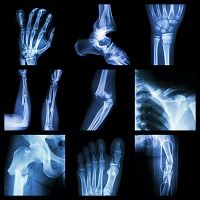Article
Women May Be Naturally Protected from Bone Loss Associated with HIV
Author(s):
Estrogen may be a driving factor behind the fact that young men infected with the human immunodeficiency virus (HIV) have higher rates of bone loss than HIV-infected women.

Estrogen may be a driving factor behind the fact that young men infected with the human immunodeficiency virus (HIV) have higher rates of bone loss than HIV-infected women.
Osteopenia or osteoporosis occur in nearly 90% of men and 60% of women with HIV. It’s not uncommon for these patients to suffer from fractures and other bone-related health issues. Bones loss can be attributed to a number of factors, including chronic inflammation, side effects of antiretroviral therapy (ART), immune dysregulation, or even just the HIV infection itself.
Researchers looked at 11 different factors that can contribute to bone loss, bone formation, and/or inflammation, as described in the Journal of Acquired Immune Deficiency Syndromes. After evaluating 450 participants with HIV, it became apparent to the researchers that adolescent males had increased levels of the marker, sCD14, which indicates macrophage activation.
- Related: Women Need More PrEP for HIV Prevention than Men
Macrophages are a type of white blood cell that play a crucial part of the immune system. They form into osteoclasts — cells responsible for continuous bone remodeling – when they are in the bone. But the study revealed that sCD14 levels were associated with bone density and mineral content. Therefore, macrophage activation seems to promote bone loss.
“Despite higher levels of general inflammation in HIV-infected females, HIV-positive males in our study showed both lower bone mass and higher sCD14 levels,” lead researcher Grace Aldrovandi, MD, chief of the Division of Infectious Diseases at Children’s Hospital Los Angeles, said in a news release.
But why were sCD14 levels higher in males than females?
“This is perhaps because estrogen is protective against some of the inflammation seen in chronic HIV, as estrogen represses macrophage function,” Aldrovandi continued.
These findings indicate that therapies targeting macrophage activation could prevent bone loss in patients with HIV.
Also on MD Magazine >>> Surgeon Pays $75K to Settle Charges He Wouldn’t Treat HIV Patient





